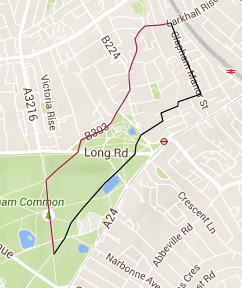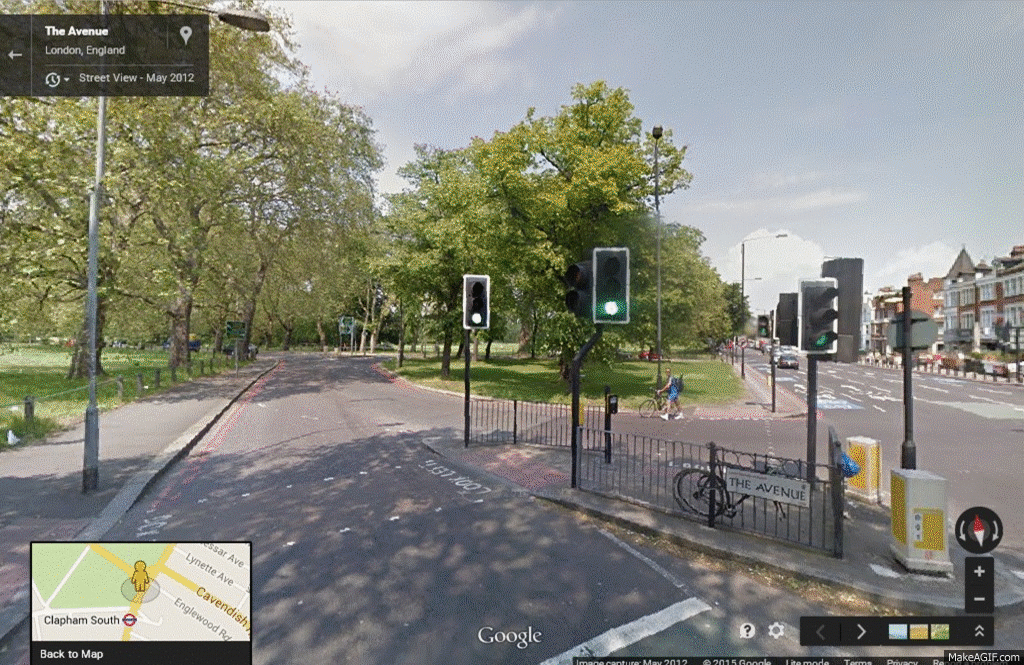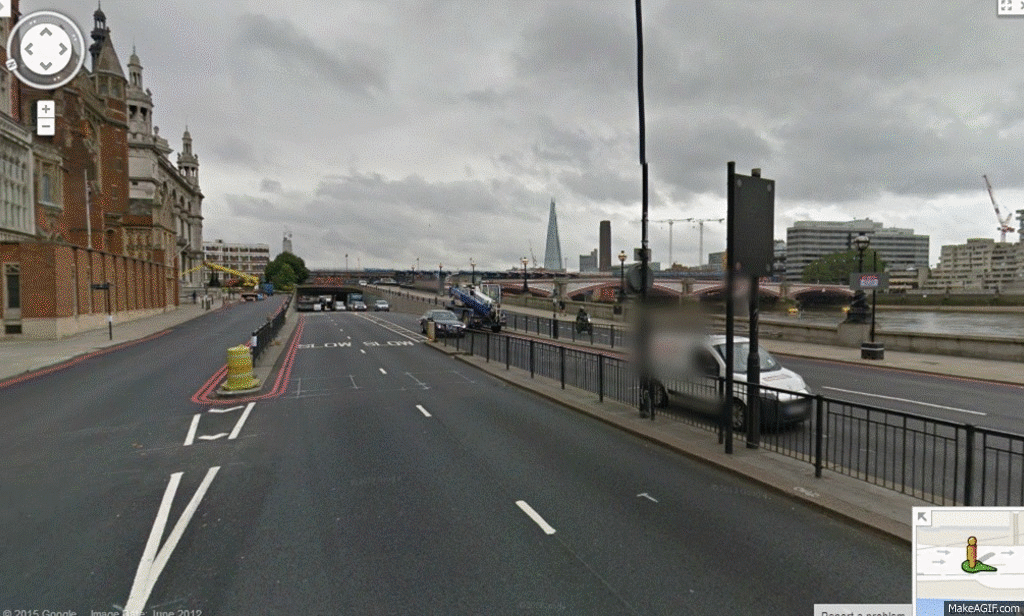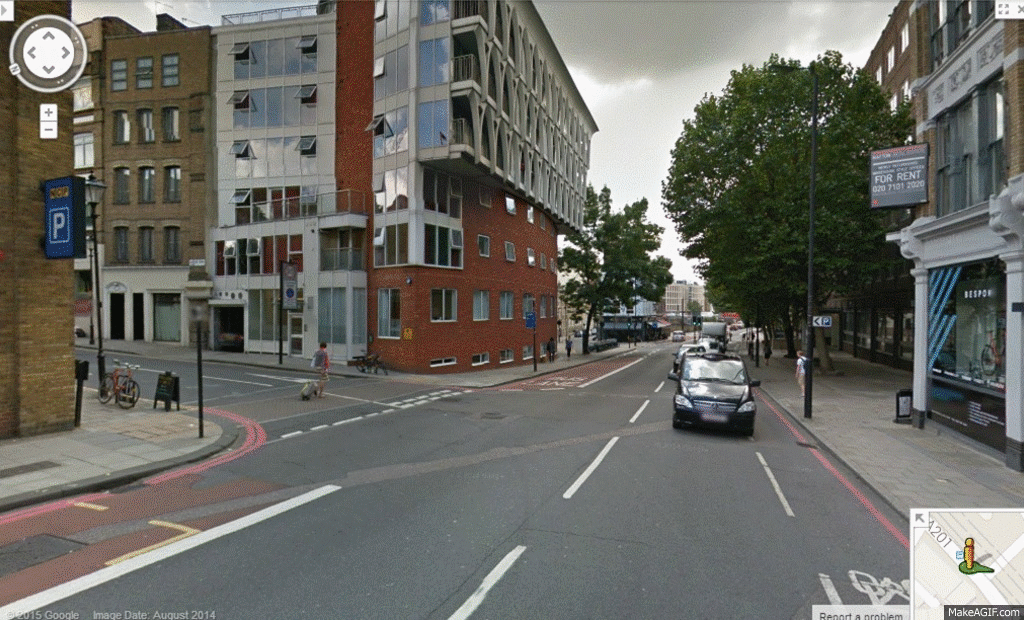Cycle network planning is a process of improving community mobility by providing interconnected routes and facilities based on bicycle users’ needs.
Cycle route planning, therefore, aims to provide cycle routes that:
• convey cyclists safely, comfortably and conveniently for the greater part of their journey; and
• minimise conflicts with other users.
The Quietways have announced funding of £123m—contrast this with £54m for the Central London cycling grid—so with that sort of money available, it is reasonable to expect that the Quietway routes are going to be safe and comfortable. But will they be "direct" (Sustrans) and link "key destinations" (TfL)? Will they, in short, be convenient?
In order to be able to answer these questions, it is necessary to look at some maps.
The map above shows the first batch of Quietway routes (not including Q6), copied as faithfully as I can from this map provided by Sustrans. (Where TfL / Sustrans show two alignment options, I have plumped for the most direct route.)
In red are old LCN routes, and in purple are non-LCN routes. 64% of the Quietway routes shown above are made up of old LCN routes.
Are the Quietway routes direct? Q2 adds 2.2 km to the most direct route (19% further); Q4 adds 1.7 km to the most direct route (26% further); and Q5 adds 2.5 km to the most direct route (15% further). On the plus side, Q1 is just 40 metres further than the most direct route (between Edward Street and Cornwall Road), and Q3 just 50 metres further.
Some of the Quietways are often an assemblage of two or more old LCN routes. Q1, for example, which runs from Greenwich railway station to Waterloo, incorporates three different LCN routes. Actually this does not cause any problems here, but Q5 (from Croydon to Waterloo) is obviously made up of two very distinct routes—LCN 5 from Croydon to Clapham Common, and LCN 3 from Clapham Common to Waterloo—so this makes for less of a straight line and more of a dog leg. Using compass colours, Q7 (from Elephant and Castle to Crystal Palace Park) is made up of four different routes, and Q2 (from Walthamstow to Russell Square) of six different routes!
The point being that the course of a route is determined by the designer. In the case of the Quietways, it is fairly certain that subjective safety and deliverability have been extremely important considerations.
In all but about eight places the Quietway routes are already subjectively safe. Another feature is that, on the whole, these routes are pretty good, with restrictions to through-traffic (rat-running) already in place (e.g. the popular cycle route through De Beauvoir Town in Hackney, part of Q2).
 |
| Chatsworth Road in Brent, part of Q3, and already closed to through-traffic. Image from Google StreetView |
From place to place, however, these routes need to be further improved (in order that they be made as direct as possible). Typically this involves converting one-way streets, or adapting shared use spaces. Not including Q4—more about which later—there are seventeen such interventions planned.
 |
| Non-functioning parts in blue, subjectively dangerous parts in red |
Transport for London has said:"Unlike the old London Cycle Network, Quietways will be direct and clearly signed, mostly on the road itself, making it difficult for cyclists to lose their way. Because they are on lower-traffic roads, they will be largely unsegregated. The main interventions on the vast majority of the network will be way-marking, surfacing improvements where necessary, removing barriers such as chicanes and improving the flow of the route. However, where directness demands the Quietway briefly join a main road, full segregation and direct crossing points will be provided, wherever possible, on that stretch."
There are a few places where these Quietway routes can be improved.
Assuming the idea is to get from Tooting Common to Clapham Common whilst completely avoiding Balham High Road / Balham Hill, the officially-proposed route (shown in black) is 200 metres further than the route shown in red (10% further), and 270 metres further than the route shown in green (13% further). I should also add that the officially-proposed route would not link in well with CS7.
Assuming the idea is to get from Larkhall Rise to Clapham Common, the officially-proposed route is 50 metres further than the red-coloured route (3% further). Ordinarily I wouldn't regard this as a problem at all, except that if cyclists wish to head west towards Battersea Rise when they get to Long Road, the officially-proposed route would add 330 metres to their journey (31% further).

| 
|
The officially-proposed route above left is 150 metres (20%) further than the alternative route, and above right 550 metres (192%) further.

| 
|
The officially-proposed route above left adds 1.1 km to the most direct route (44% further), and above right 900 metres (24% further).

| 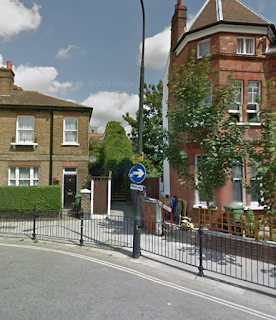
|
The Quietways also feature one very curious anomaly, as shown above. This area has previously been discussed on the Voleospeed blog. Colin writes: "The option that avoids the horrible roads the most is to go up Broadhurst Gardens and on to West End Lane (where the traffic is mostly static anyway). However, Broadhurst Gardens has not been made a contraflow" [source]. Camden Council have previously rejected the idea of two-way cycling on this section of Broadhurst Gardens [source], so the alternative seems to be to redesign the pedestrian foot-bridge (covered by vegetation in the Google StreetView image above). Clearly this requires some more thought.
* * *
The Quietway routes do not cohere, and this very much diminishes TfL's claim that the Quietways link "key destinations" (cyclists are not like trains on a track). This notwithstanding, a couple of quirks stand out.
The TfL / Sustrans map says that Q1 goes from Waterloo to Greenwich. If cyclists actually want to go to Greenwich—as opposed to Greenwich railway station—the Quietway route would add 500 metres to their journey (35% further).
 |
| Image from Google StreetView |
Q3 goes from Gladstone Park to Regent's Park. The place where Q3 ends, at the entrance to Regent's Park, does not allow cycling.
According to Tom Bogdanowicz, "LCC takes the view that Quietways must take people where they want to go, not stopping short of key destinations or running out at borough boundaries" [source]. I would like to see them express this view in much stronger terms, and not simply to leave it to the local groups.
* * *
Most of the Quietway routes either stop short of key destinations, or arrive at them in a roundabout way. Q4 does both.
My prediction for the route shown in black is that it would not help a single person make an everyday journey (except in part). It's a poorly conceived, poorly planned route.
* * *
According to another LCC report, the aim of the Quietways is "to overcome barriers to cycling, targeting less confident cyclists who want to use low-traffic routes, whilst also providing for existing cyclists who want to travel at a more gentle pace" [source].
This idea has been tried out a couple of times before, and hasn't worked yet. Beginning with the London Cycle Network, which sought to "cater for all age groups whether they are new to cycling or existing regular cyclists" [source], and on to the LCN+. "where people of all ages, abilities and cultures have the incentive, confidence and facilities to cycle whenever it suits them" [source], the effect is to set the bar too high, with the consequence that it is very difficult to get anything done ('soft' measures aside, and the occasional piece of 'hard' infrastructure notwithstanding).
TfL are now developing a cycling network a few routes at a time, and whilst this is arguably an improvement on what has gone before, there are still significant drawbacks to this approach. (If we do actually want a network, the current strategy of flurries of activity interspersed with long periods of stasis cannot reasonably be maintained: we are going to have to bite the bullet at some point.)
Cycling England published a report entitled Making a Cycling Town [here], which captured the experiences of the Cycling Demonstration Towns. It says:
"Finding the right target audiences is the essential starting point for cost effective behaviour change: ‘Which people can be motivated to cycle?’ and then: ‘Where do they want to go?’ and only thereafter: ‘What measures are required to help them take up cycling?’
"The starting point in each Cycling Demonstration Town was to identify which groups of people might be most likely to make such a shift, the maybe cyclists, and then to target them with a series of initiatives designed to overcome barriers to change.
"It was clear that the advice of local cycling groups needs to be considered in context (i.e. it represents the views of experienced cyclists and not necessarily of ‘maybe’ cyclists). The best results were had when local cycle campaigners worked hand-in-hand with the local authority, but where both acknowledged that the target audience was 'maybe' cyclists, and the needs of this latter group were actively and separately sought."
The 'maybe' cyclists are described in Cycling: the way ahead as "the mass of non-cyclists who are most likely to take up cycling again", and in Roger Geller's Four types of cyclist as "the Enthused and Confident". They make up about seven per cent of the population as a whole.
* * *
Tom Bogdanowicz's before-mentioned article begins thus: "If you haven’t heard much about the Quietways, you are not alone." Now, if members of the London Cycling Campaign haven't heard much about the Quietways, then what prospect is there that the target audience would be any better informed? (According to the Ranty Highwayman, the target audience "includes people who want to cycle but don't because of the danger, and people who don't know they would like to cycle yet!" [source].)
Tom goes on to explain that the "network designers" started with a list of 260 routes, each suggested by the London boroughs. This was reduced to a shortlist of a couple of dozen "priority routes", and then whittled down even further for what Tom calls "the first phase".
Tom notes that the Quietway routes are expected to comply with the six core design outcomes contained in the London Cycle Design Standards. These are: safety, directness, comfort, coherence, attractiveness and adaptability.
Tom explains that every route will be subject to a Cycling Level of Service assessment, which means that every section of route will be rated and awarded points from 0 to 6. Those sections of route with a zero rating will not, Tom says, get approval.
The factors which are likely to result in a zero rating are: left hook danger, cycle lanes below 1.5 m next to parked cars, 15% or more vehicles exceeding 30 mph, more than 1000 vehicles per hour at peak times and 5% or more HGV traffic.
* * *
The DfT publication Cycle Infrastructure Design (more commonly known by its serial number, LTN 2/08) points out: "Planning and designing high quality infrastructure involves developing individual, site-specific solutions, but there are some common requirements that need to be satisfied. The underpinning principle is that measures for pedestrians and cyclists should offer positive provision that reduces delay or diversion and improves safety.
The Quietway programme targets not the Enthused and Confident cyclists, but the less confident cyclists (aka the Interested but Concerned). To be fair, this hasn't caused as many problems as it used to: where there is a conflict between routes which look safe and inviting and routes which are meaningful and direct, more often than not there has not been any compromise. This said, the "network" lacks connectivity and density, and in addition to which, there are more than a handful of instances where we have ended up with relatively lengthy diversions.
* * *
It is established beyond all reasonable doubt that good quality cycle infrastructure can't rapidly boost city-wide bike ridership without a network. Jose Marques Sillero from Seville expressed this idea in even more forthright language, saying that isolated cycle paths are "almost useless if they’re not connected, making a network from the beginning" [source]. David Hembrow is also very clear about this: "Good quality cycle routes are of almost no use if they are not very close together" [source].
The data supports these views. In 2013 two relatively high profile cycle schemes were completed in London, but in both cases there hasn't been any noticeable increase in the number of people using them:
CS2 Extension
2012: 1771
2013: 1688
2014: 1816
Royal College Street
2012: 1124
2013: 1071
2014: 1152
To remind you, the lesson from the Cycling Demonstration Towns appears to be that finding the right target audiences is the essential starting point for cost effective behaviour change.
Cycling England suggests that, at this stage, the right target audience is the 'maybe' cyclists, However, the LCC take a different view: "We are convinced it would be a mistake for the quality of any elements of the network to be designed in a way that makes them less suitable for any type of cyclists" (that is to say, the network must be suitable for experienced and inexperienced cyclists alike) [source].
I have tried to discuss this with the London Cycling Campaign, for example here. "What is the argument or evidence," I have asked them, "which says that providing for the needs of a load of people who don't yet cycle is more pressing than providing for the needs of a load of people who do (or who are most likely to)?" They didn't respond.
Conclusion
The Quietways will only work if they are meaningful, direct, effectively waymarked, and link in well with other routes (including those which function at a minimum level).
I have spent more than ten thousand hours drawing lines on a map of London in order to present the very same routes which make up the Quietways in a way that is coherent, simple to read and intuitively useful. However, I understand that my proposals for a comprehensive, city-wide cycling network are not likely to be taken forward for as long as the LCC are dominating the debate.
The LCC say: "It’s absolutely essential that these routes are actually ‘quiet’—the routes must be high-quality, direct, and cater for all cycling abilities, and they must provide safe and convenient passage through junctions" [source].
This is assertion. This is the world as it ought to be. At this stage in the development of an amenable cycling environment, except to say that a route must be direct, the LCC would not be able to supply any independent verification to support their view.
For myself, I truly believe that it is very much in the LCC's interest to drag things out for as long they can. This they have done over the last fifteen years, and are continuing to do it now, by making the task ahead as difficult as possible for everyone. Why should the Cycling Commissioner have to "fight" to get the Central London cycling grid up and running [source]? Simplify, simplify, simplify!



